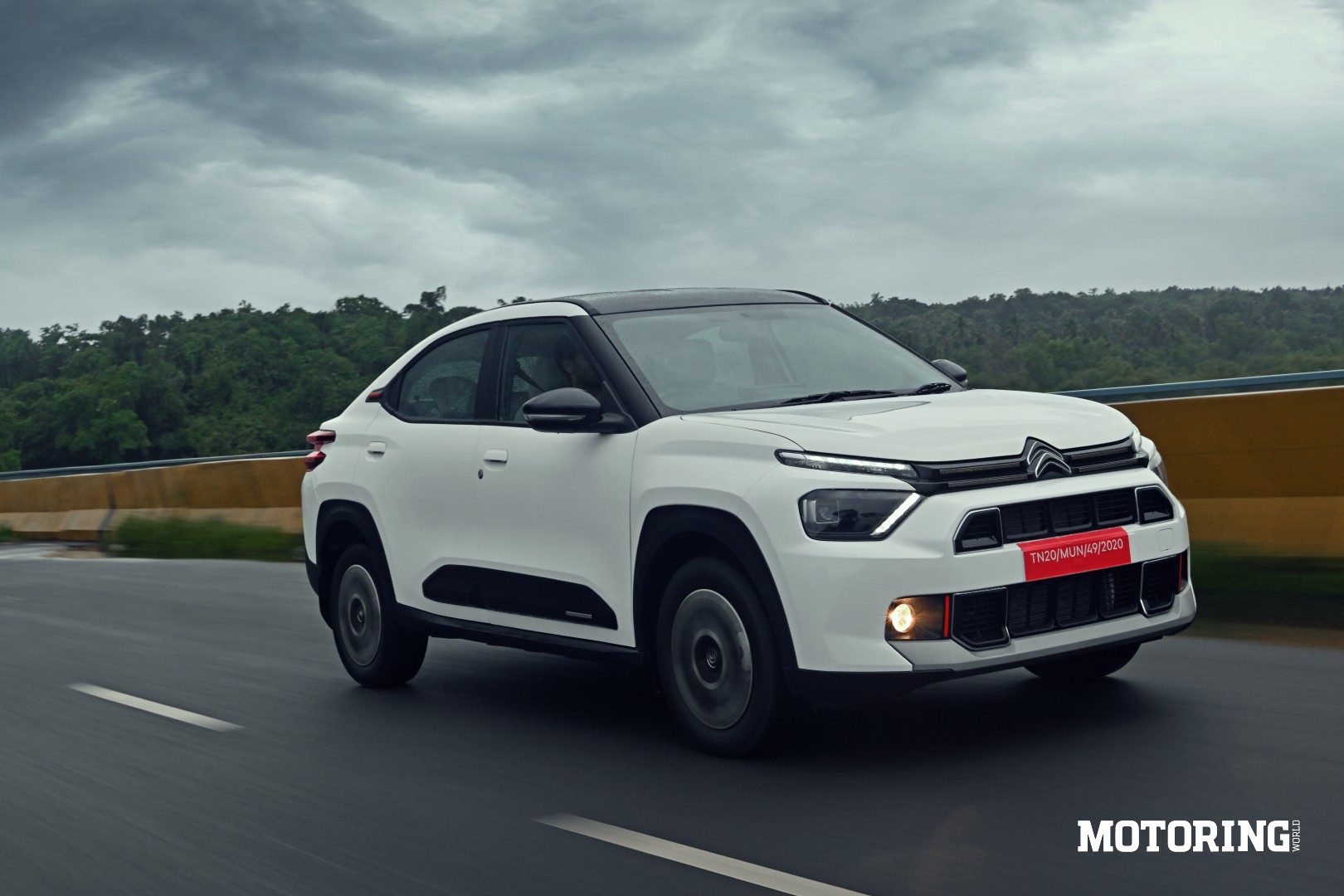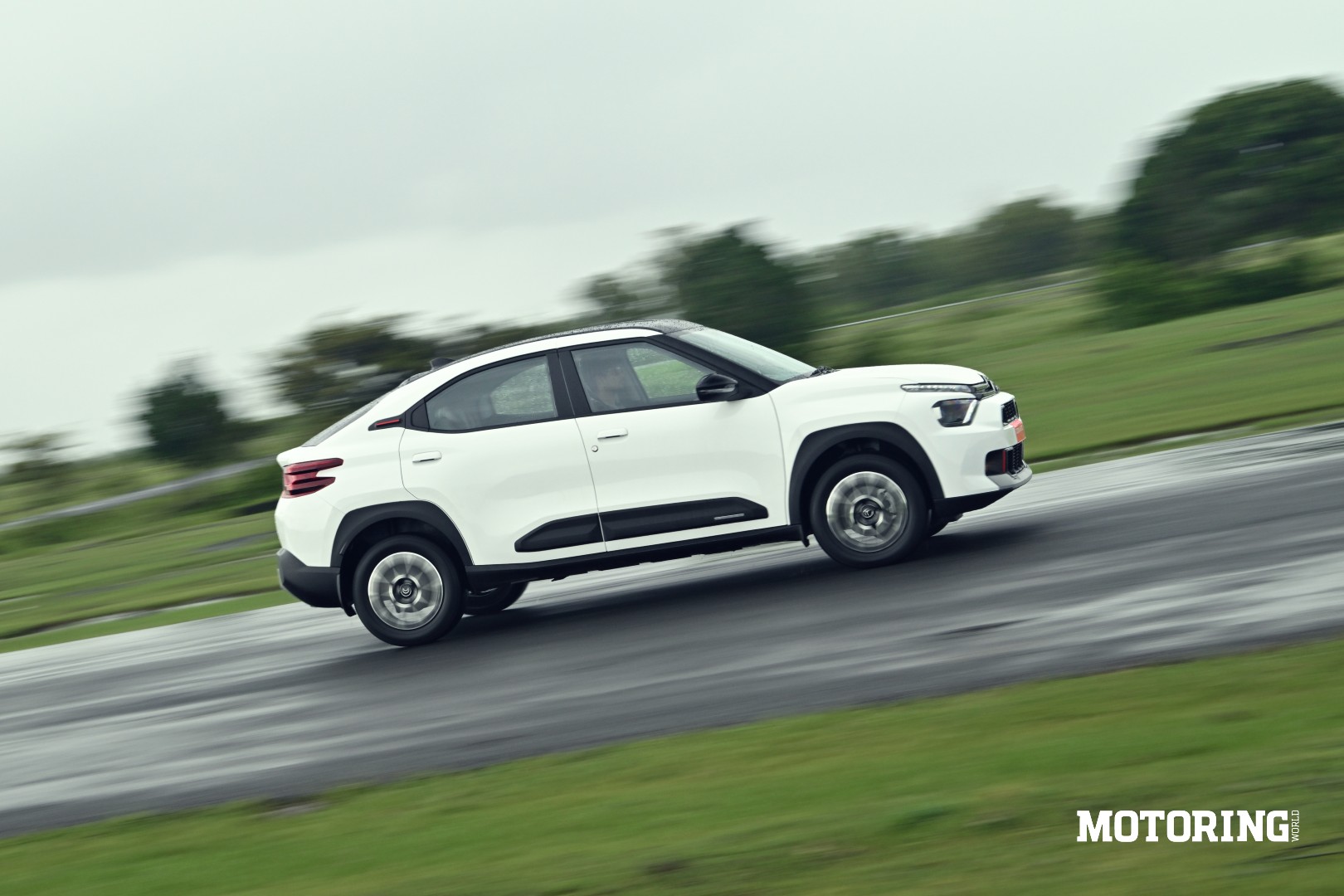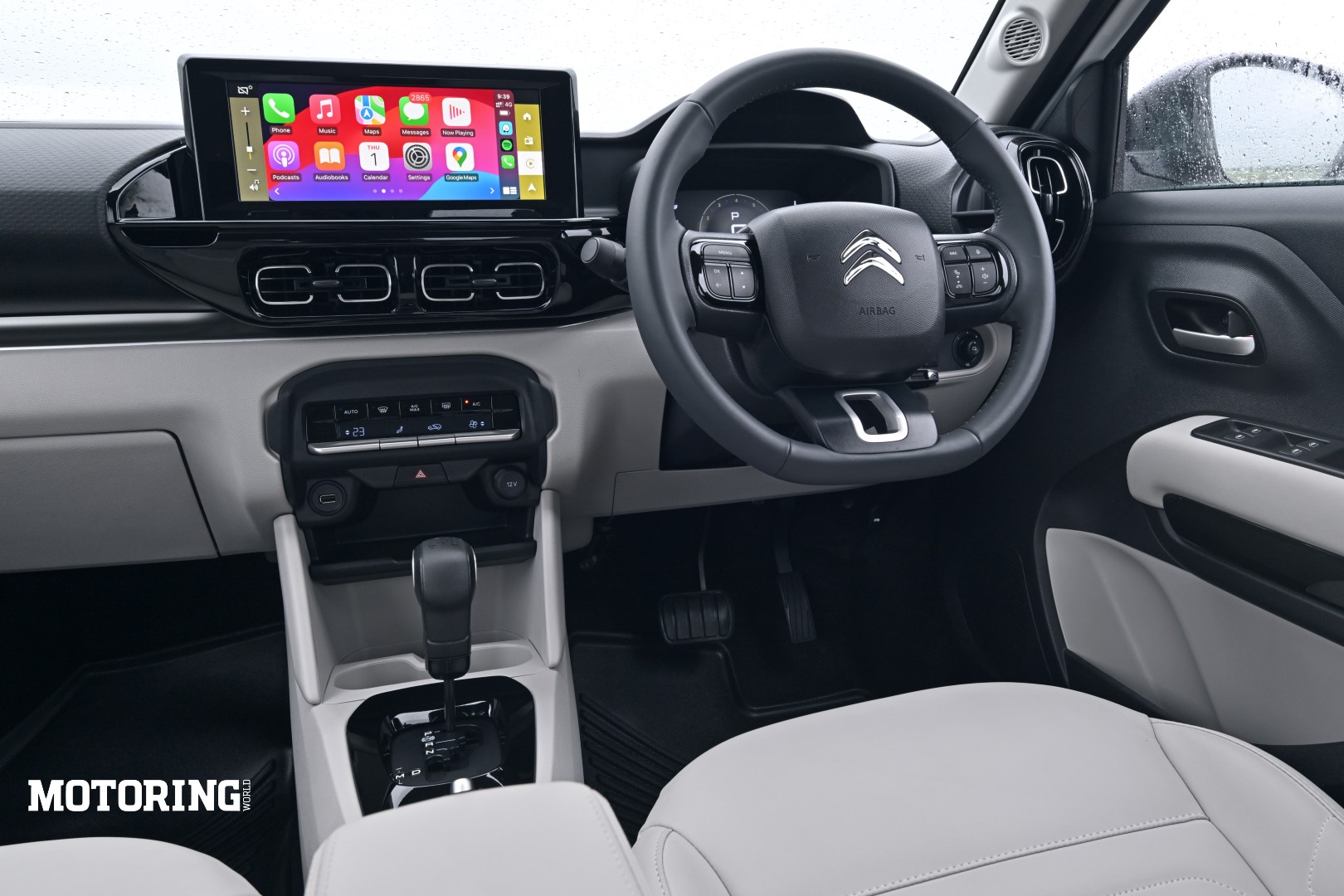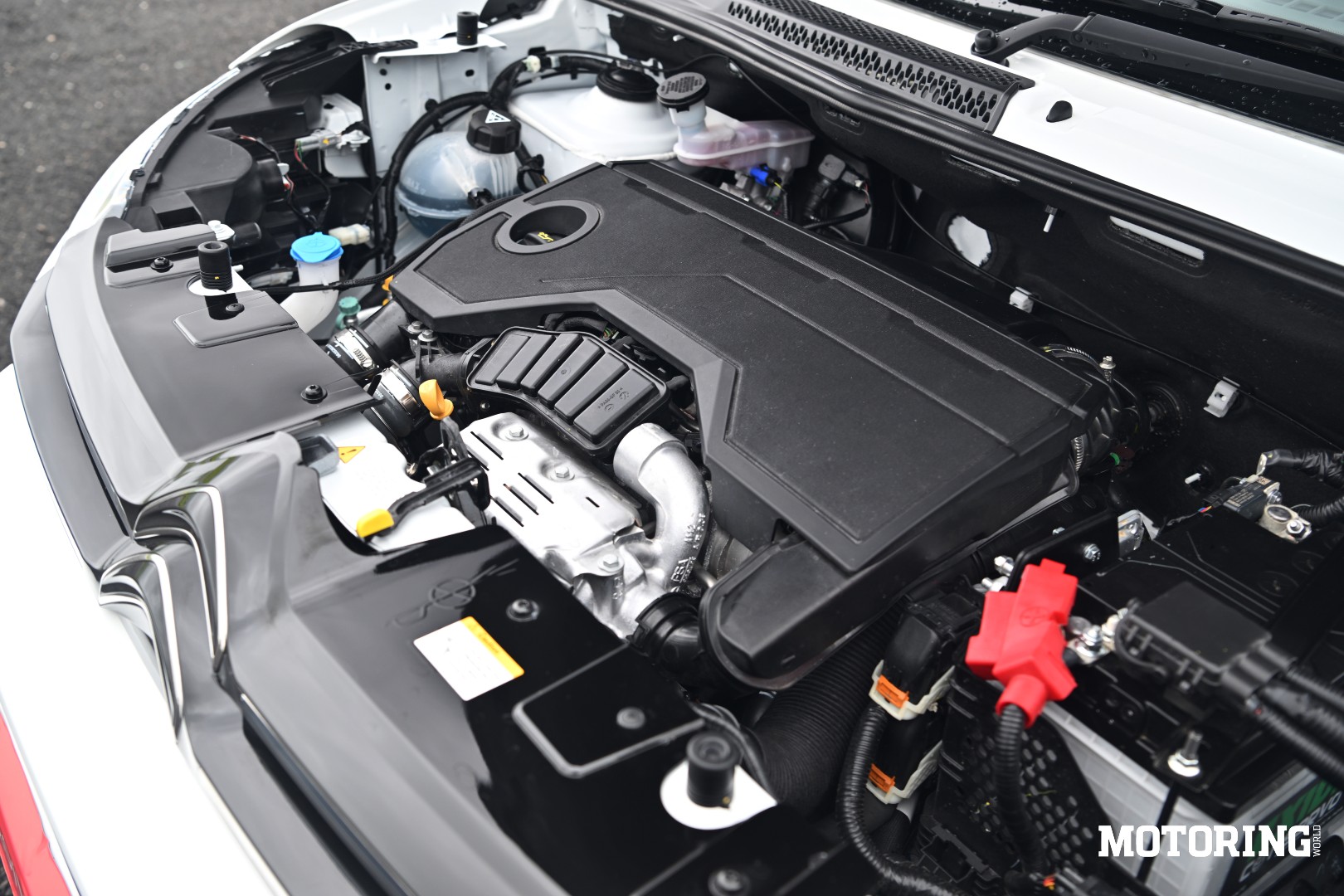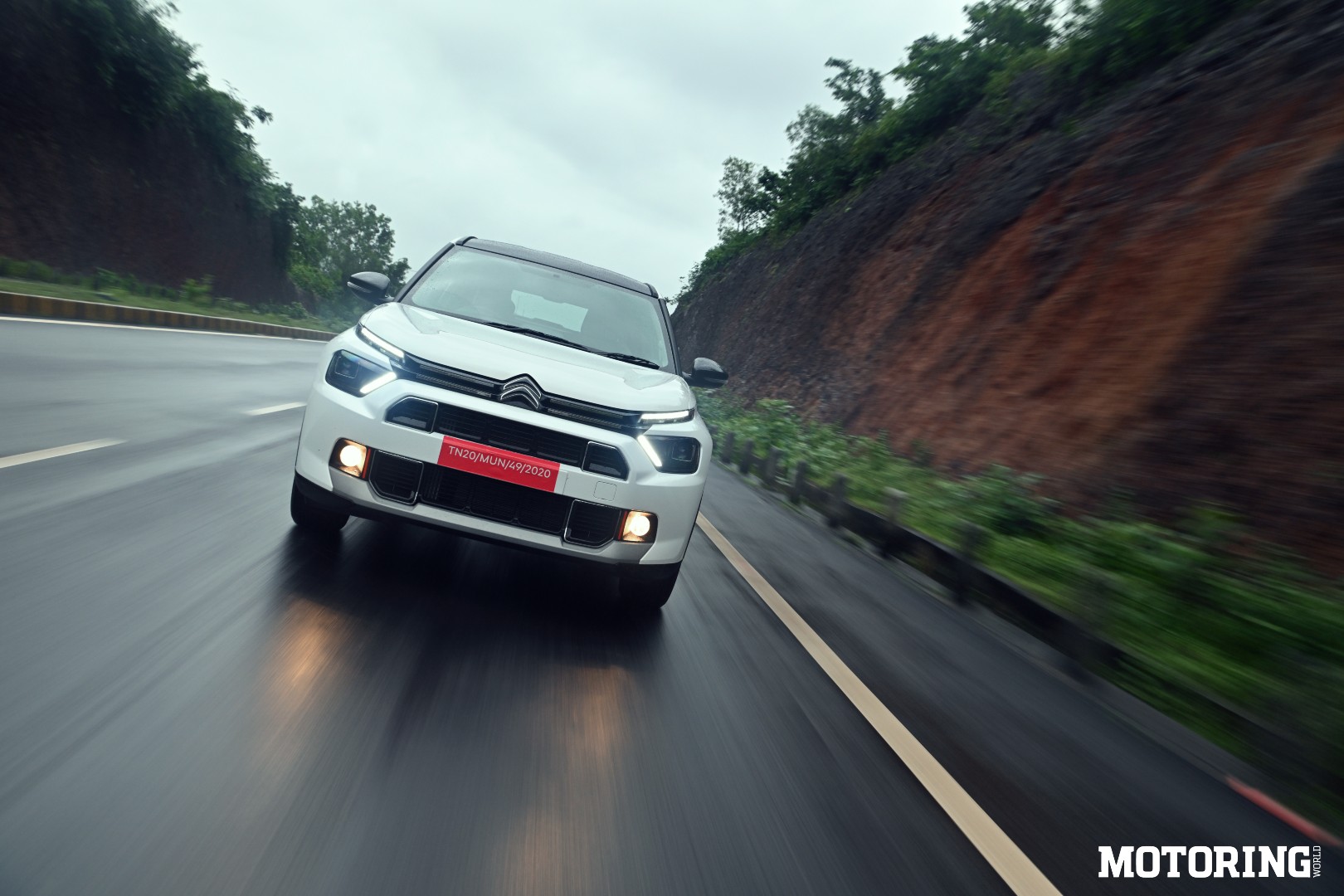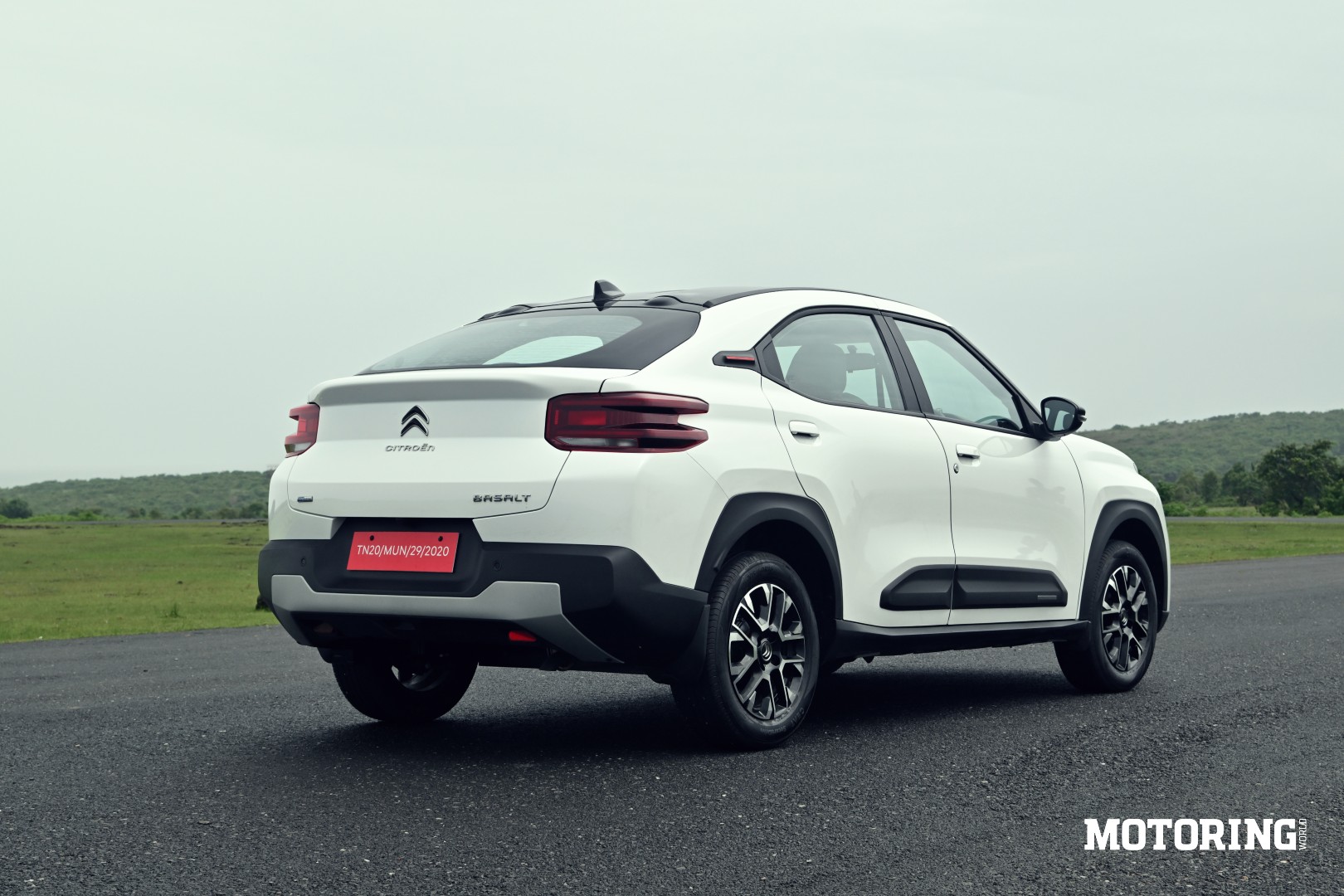If you’re someone who thinks that an SUV with a coupe-style roof is a bit odd, blame BMW and the X6. If you’re someone who thinks that an SUV with a coupe-style roof is the business, thank BMW and the X6. I fall somewhere in between – I’m a bit of a purist, so coupe+SUV don’t really sit well together for me, in general. That said, am I going to clutch my pearls and decry the fact that there are lots of swoopy-roofed SUVs out there, which the paying public clearly seems to fancy? Certainly not. When I saw the first images of the Basalt, I thought ‘Hmm, another force-fitted car that nobody seems to have asked for, but it doesn’t look half bad.’ When I saw it in the flesh for the first time in Goa, I have to admit that it looked much better than in photos, which was a good start; perhaps it was more than just a C3 Aircross with a funky roofline.
With the Basalt, Citroen has carved out a new niche in the mid-size SUV segment (and it’s now been joined by the Tata Curvv). The car is the fourth product to come out of the firm’s India-specific C-Cubed platform (and will also go on sale in Europe and South America), and it lands in arguably the hottest segment in the Indian automotive market, so it has quite a task ahead of it. On the looks front, I’d say it’s made an excellent start – it’s a very attractive car, and stands apart from everything else in its segment.
From sketch to production, the Basalt has stayed true (more or less) to the teaser images that were first released earlier in the year; the cladding has a matte finish, instead of the shiny plastic that was shown. Otherwise, you’d be forgiven for mistaking it for the C3 Aircross from the front, since both snouts are almost identical; this is no bad thing, since the Aircross is a good looking car. It’s only upon closer inspection that the minor differences on the Basalt’s face become apparent – the protruding nose, the different finish of the inserts on the grille and projector headlamps (finally). Otherwise, the creases in the bonnet, the split grille, the logo and the faux skid plate on the chin are the same as those on its 7-seat cousin.
In profile, there’s no mistaking which car is which, because of the Basalt’s sloping roofline, which meets the higher section of the boot lid. The rear windows have been given a bit of a pinch, and the 16-inch alloys and black cladding round things off. The door handles are still the Aircross’ old school pull-upward variety, rather than the pull-towards-you handles, which are easier to operate. The rear end is distinctive looking; it’s short, but it doesn’t look awkward at all, because the tail gate is nicely shaped. There’s a dual-tone rear bumper, and the tail lamps fill out the rump in a tasteful way. This is probably the best-looking car in the segment at the moment, without exaggeration. There is one drawback, however – the tailgate opens up to a height that will be a bit difficult to access for shorter people, when they want to bring it back down. Citroen is offering five colours – white, two shades of grey, blue and red, with the white and red variants getting black roofs. It’s a pity the Basalt isn’t offered in the gold shade that appeared in the initial images – that looked rather good.
The cabin and dashboard will be largely familiar to anyone who’s spent time in the C3 Aircross, but like the exterior, there are a few subtle changes. The AC now has some rocker-switch controls, digital readouts and is an automatic unit to boot (the Aircross has a manual AC with dials). The front armrest is now larger, too, and the seats have a pleasing fabric finish, with some redesigned headrests that are very supportive; the seats themselves are very comfortable, and the rear bench in the automatic variant has adjustable thigh support, which is really rather useful. I’m not sure about the mechanism, though; you have to pull a handle up and down to adjust the unit, and it felt a bit hit-and-miss in terms of accuracy (and long-term durability). The cabin is also very spacious, and feels light and airy, so it’s a good place in which to spend some time; the sloping roof doesn’t affect headroom, at least not for my 5’11” frame.
In terms of features, you get wireless charging, USB ports, a rear AC vent, a 10.25-inch touchscreen infotainment panel, a 7-inch digital instrument cluster (in higher variants), connected car tech and a few more; prominently absent are things like a sunroof, a start/stop button and an electric headlight beam adjuster. Citroen’s C-Cubed design elements are sprinkled around the cabin, and other than some iffy plastics (there are some sharp edges) and a few fit/finish issues here and there, there’s an undeniable flair to this cabin. An enormous 470-litre boot provides practicality, and six airbags, hill-hold assist, TPMS and ESP are standard on all variants. Not a world-beating interior, to be sure, but not one to complain about endlessly either.
Both Citroen engines make appearances in the Basalt – the 1.2-litre, NA unit with 82 bhp and 11.7 kgm and the turbocharged 1.2-litre unit making 110 bhp and 19.3 kgm (with a 6-speed manual) and 20.9 kgm (with a 6-speed torque converter auto ‘box); the NA engine only gets a 5-speed manual. Citroen has some pretty impressive mileage claims -18 kpl for the NA engine, 19.5 kpl for the turbo-petrol manual and 18.7 kpl for the turbo-petrol automatic.
I landed the keys to a turbo petrol with a manual gearbox (them’s the breaks), and off I went into one of Goa’s infamous monsoon thunderstorms. The parallels with the Aircross are immediately apparent in the engine department; the powerplant feels unstressed at low revs, and there’s lots of torque available here, so frequent gear-shifting isn’t required – you can happily potter around in the first three gears at city speeds.
When you want to get moving, a quick downshift and the Basalt takes off in a sprightly manner, building up momentum smoothly and rapidly enough for most circumstances; there’s a teeny bit of engine and turbo noise that creeps into the cabin, but it’s not annoying. The 6-speed gearbox is an assured one, delivering smooth shifts, and the clutch action is nice and light. With a long stretch of highway before you, it’s possible to push the Basalt into high triple-digit speeds fairly easily, although a 120 kph cruise in 6th is optimum (no, there’s no cruise control). Rivals like the Creta and Seltos turbo-petrols will have its number in the performance department, but there’s a definite likeability factor in the Basalt.
Given Citroen’s emphasis on comfort and ride quality, it’s no surprise that the Basalt excels at both. The suspension is superb, and it soaks up pretty much everything the roads can throw at it; front and rear passengers alike will appreciate the suppleness on offer at all speeds. In the handling stakes, the Basalt will lose out to something like a VW Taigun when it comes to steering precision and feel, chassis control and braking feel. However, it’s no mug either; the car feels planted and sure of itself, there’s no excessive squirming and rolling and it goes where you point it, which is what most people want. Could the steering wheel and brakes have been sharpened up a couple of notches? Absolutely, but no deals are being broken here.
Who’s the Basalt for, ultimately? At Rs 7.99 lakh onwards (introductory), ex-showroom, its rivals – the Creta, Seltos, Grand Vitara and Elevate – all come from firms with far deeper roots in India, and therefore much more brand value; all of them offer sales and service networks (read as peace of mind) that are more widespread, too. When it comes to the cars themselves, Citroens still don’t entirely match up to the rest in several departments – overall build quality, fit/finish, features and engine choices, principally. In all honesty, there isn’t a really compelling reason to spring for a Basalt in this segment – unless, that is, you think that the other SUVs in it are too common, and you want to stand out visually, more than anything else. With a Basalt, you certainly will, and you’ll likely find yourself enjoying what it offers, rather than ruminating about what it doesn’t.





